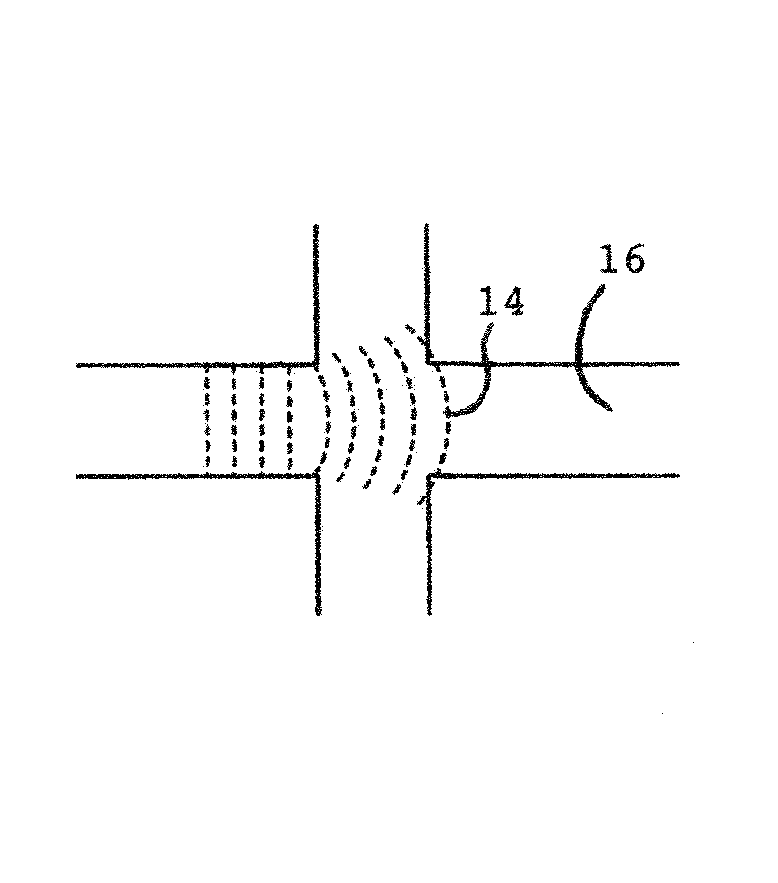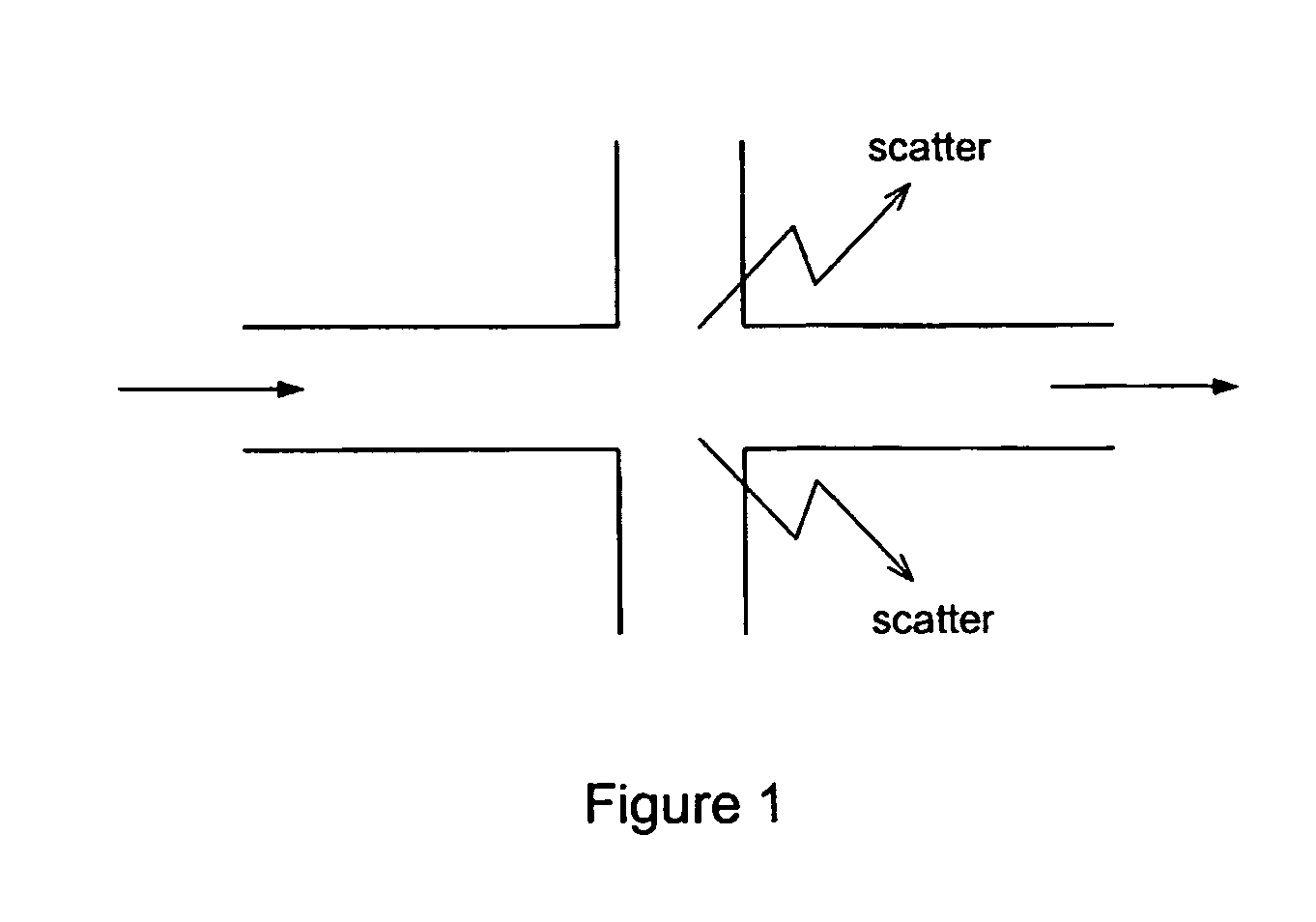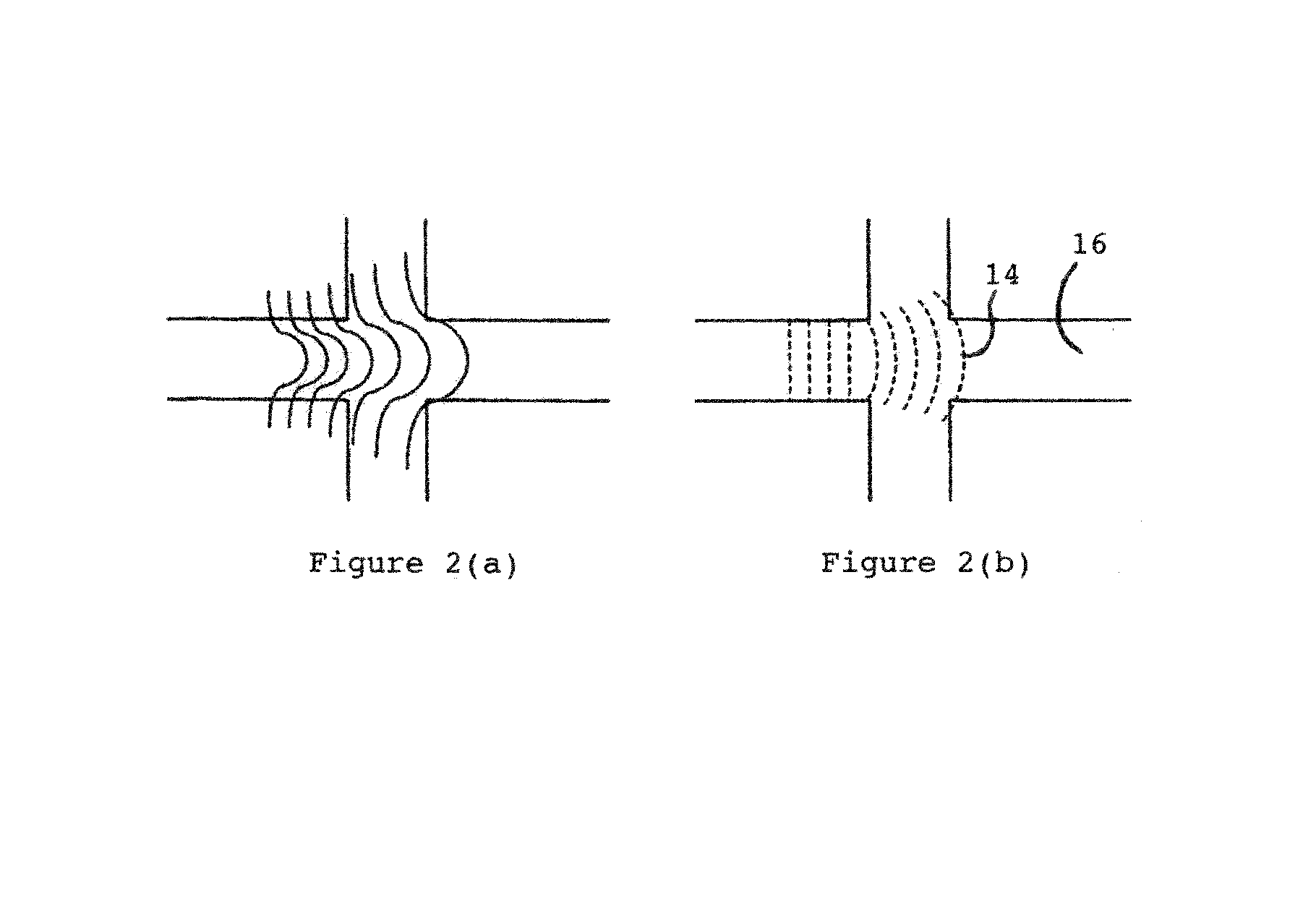Low loss lateral optical waveguide intersections
a technology of lateral optical waveguides and intersections, which is applied in the direction of optical waveguide light guides, instruments, optics, etc., can solve the problems of more difficult to achieve low crosstalk and the design of ideal waveguide crossings in conventional devices, and achieves the effects of reducing transmission loss, minimizing diffraction, and minimizing transmission loss
- Summary
- Abstract
- Description
- Claims
- Application Information
AI Technical Summary
Benefits of technology
Problems solved by technology
Method used
Image
Examples
Embodiment Construction
[0036]The invention comprises a low loss lateral waveguide intersection. This invention minimizes the focus on optical field distortions resulting from the influence of interfering fields from an adjacent or lateral waveguide having perpendicular intersections. Such a lateral and perpendicular intersection allows for two waveguides crossing in a precise geometric pattern. Three waveguides could potentially intersect perpendicularly in a three-dimensional waveguide crossing. A major feature of the inventive concept is that it reduces transmission loss due to diffractive scattering of light in the intersecting region illustrated in FIG. 1. Transmission loss results from the diffraction of the optical field in the intersecting region where the field is no longer bound by the waveguide geometry. FIG. 2(a) shows the diffraction of the amplitude as the field of light expands in the intersecting region. This expanding field causes the phase front to be parabolically curved, as depicted in ...
PUM
 Login to View More
Login to View More Abstract
Description
Claims
Application Information
 Login to View More
Login to View More - R&D
- Intellectual Property
- Life Sciences
- Materials
- Tech Scout
- Unparalleled Data Quality
- Higher Quality Content
- 60% Fewer Hallucinations
Browse by: Latest US Patents, China's latest patents, Technical Efficacy Thesaurus, Application Domain, Technology Topic, Popular Technical Reports.
© 2025 PatSnap. All rights reserved.Legal|Privacy policy|Modern Slavery Act Transparency Statement|Sitemap|About US| Contact US: help@patsnap.com



